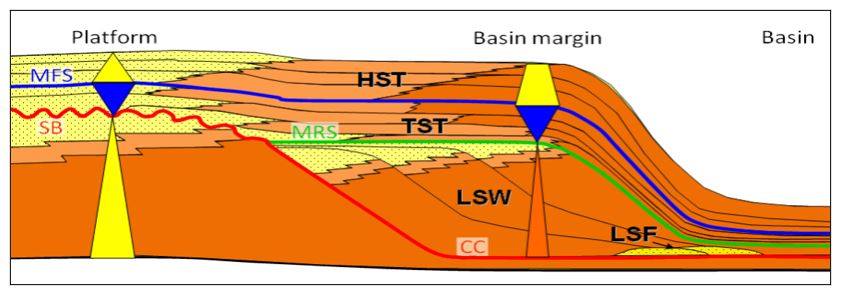Table of Contents
The Maximum Flooding Surface (MFS)
The TST culminates with the MFS – the maximum landward extent of marine conditions. It separates transgressive sediments below from regressive sediments above. It broadly equates to highest relative sea level. It is also the culmination of the condensed section in more distal parts of the basin.

The MFS (shown here as a blue line) is often the most fossiliferous part of an overall sequence - especially in planktonic microfossils.
As the majority of organisms that form fossils are wholly marine forms, it follows that when sea levels are highest, maximum fossil abundances occur over widespread areas. MFSs have abundant fossils in general and planktonic fossils (in microfossil terms these would be planktonic foraminifera, calcareous nannoplankton and dinoflagellates) in particular. The MFS is often more recognisable and correlatable than the SB/CC in this respect because of this abundant microfossil signature.